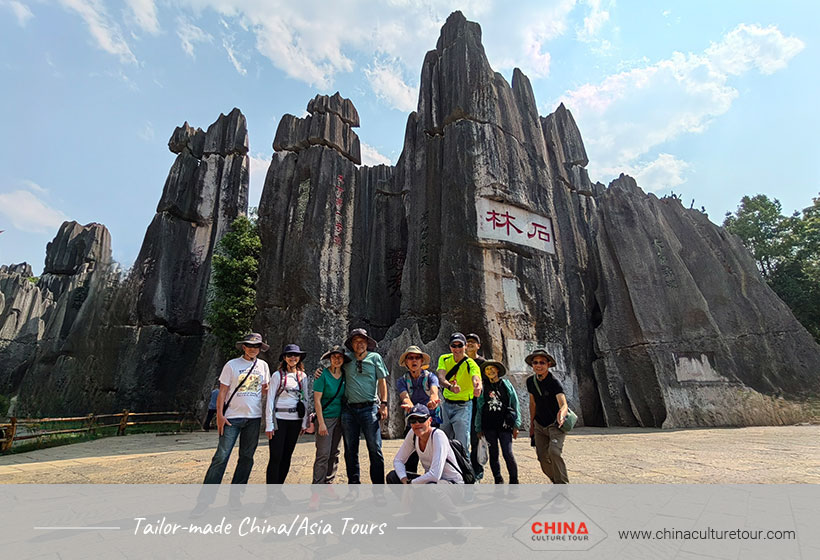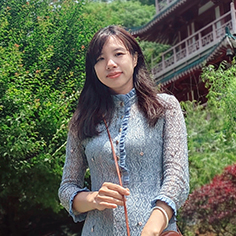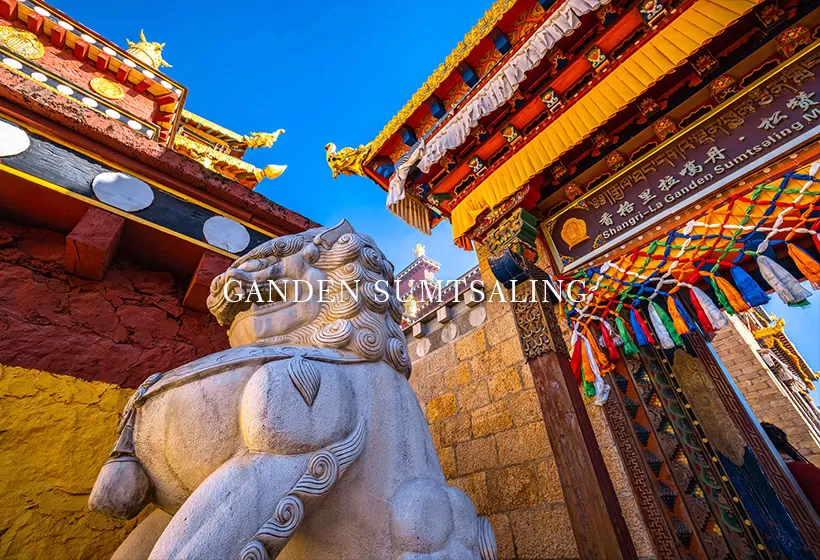Short Introduction to Kunming Local Culture: History, Nation, Diet, Clothing, etc
Kunming, the capital of Yunnan Province, is not only one of China’s first 24 National Historical and Cultural Cities but also a city that carries more than 2,200 years of civilization. Enjoying comfortable weather in every season, the city is widely known as the ‘City of Eternal Spring.’ Located on the southwestern frontier of China, Kunming’s unique mountainous terrain kept it relatively isolated for a long time. Within this historical context, the 25 ethnic groups of Yunnan gradually developed and preserved their distinctive traditions and customs.
These unique cultural practices, markedly different from those of the outside world, have become an essential part of Yunnan’s rich ethnic heritage. The region is also home to the UNESCO World Heritage Site, the Stone Forest, a breathtaking natural wonder that exemplifies Kunming’s harmonious blend of cultural and natural treasures.
Brief History
Kunming has a long and rich history, with more than 2,200 years since its establishment as a city, and the Dianchi Lake area boasting a civilization of over 3,000 years. It has long served as the political, economic, and cultural center of Yunnan.
The name “Kunming” was originally the name of an ancient ethnic group in Southwest China and began to be used as a place name in 1254. Between 4,000 and 7,000 years ago, agricultural communities had already settled around Dianchi Lake.
In the 3rd century BCE, General Zhuang Qiao of the Chu State entered Yunnan with his troops, allied with local tribes, and established the Dian Kingdom, proclaiming himself the “King of Dian.” In 109 BCE during the Western Han Dynasty, Emperor Wu of Han sent troops from the Bashu region, forcing the Dian King to surrender. The Han government then established Yizhou Commandery in the area.
In 617 CE, during the Sui Dynasty’s final years and the founding of the Tang Dynasty, 92 prefectures were set up in Yunnan, with Dianchi Lake as their core region. In the mid-Tang period, the Meng clan rose to power around Erhai Lake and established the Nanzhao Kingdom.
In 1253, Yuan troops conquered Yunnan, and in 1276, the Yuan government set up the Yunnan Branch Secretariat. During the Ming Dynasty in 1381, Yunnan was administered under the Provincial Administration Commission and the Military Commission.
In 1905, during the Qing Dynasty, Kunming was opened as a treaty port. By 1910, with the completion of the Yunnan–Vietnam Railway, Kunming developed into an open city. In March 1950, the People’s Liberation Army entered Kunming, establishing the Kunming Military Control Commission and the Kunming Municipal People’s Government. As of the end of 2022, Kunming administers 7 districts, 6 counties, and oversees 1 county-level city.
Ethnic Culture
Kunming is the Chinese provincial capital with the largest number of ethnic autonomous areas, the most resident ethnic minority groups, and the second-largest minority population. A total of 26 ethnic groups live here, blending their cultures into the city’s diverse folk customs, cuisine, clothing, and architecture. Among them, nine are native ethnic groups: Yi, Hui, Bai, Miao, Lisu, Zhuang, Dai, Hani, and Buyi. The Yi ethnic group is the largest with a population of about 506,300, while the Buyi are the smallest with just over 6,100 residents. Yi culture, in particular, is widely distributed and has a strong influence across the region.
Yi people: The Yi ethnic groupare the largest ethnic group in Kunming, known for their diligence, wisdom, kindness, and simplicity. Their clothing is colorful and distinctive, while their traditional dances are equally unique and expressive. The Yi people have their own rich language and script, and their culture is marked by a reverence for tigers, a preference for the color black, respect for fire, and a strong martial spirit. They are highly skilled in embroidery and Yi script classics, and their Ten-Month Solar Calendar reflects their deep historical and cultural achievements—so remarkable that it is often compared to the world-renowned Maya civilization.
Yi Minority Clothes: The traditional attire of the Yi people in Southern Yunnan is striking and symbolic. Men typically wear black as the dominant color, with garments trimmed along the edges. A signature feature is the black head wrap, paired with a fitted jacket that crosses or buttons to the front, fastened with a belt. Their loose trousers are complemented by a large woolen cloak known as “Wala.” Women’s clothing, in contrast, is vibrant and colorful. They usually wear a right-lapped jacket with a green-edged vest, matched with a pleated white skirt and a finely embroidered apron. Their distinctive headwear, the “rooster comb hat,” symbolizes good fortune and happiness for Yi girls, making it one of the most iconic elements of Yi costume culture.
Naxi people: The Naxi are the second-largest ethnic group in Kunming. Historically, they were an important people along the ancient Silk Road and once held a ruling position in the Dehong region. With a profound cultural heritage, the Naxi are known for their distinctive village architecture and unique religious beliefs. Their crafts, including painting, woodcarving, and silverwork, are highly regarded both in China and abroad.
Naxi Minority Clothes: Naxi men wear short jackets with long pants and a small felt hat decorated with pheasant feathers. Naxi women's attire typically features a base of blue or black fabric paired with red or blue accents. They wear long, knee-length, wide-sleeved robes with a vest, a pleated waist sash, long pants, and a sheepskin shawl. During festivals, They don a shawls with sun,moon, and seven-star embroidery pattens, symbolizing the diligence, bravery, and virtues of Naxi women.
Hui people: Hui people are descendants of traders who came along the Silk Road from countries like Arabia and Persia. They are a hardworking, brave, and intelligent people, known for their business acumen. They are known for their deep-rooted Islamic traditions, vibrant mosques such as the Nancheng Mosque, and a distinctive culinary culture that emphasizes halal food.
Hui Minority Clothes: Middle-aged and elderly men usually wear white skullcaps with white shirts, while women wear black, white, or green headscarves. Elderly women often prefer black jackets with front openings.
Bai people :The Bai people, who revere the color white, are known for their unique customs and tea culture. Among them, the tradition of San Dao Cha (Three-Course Tea) symbolizes the philosophy of life, reflecting the Bai people’s distinctive understanding and perception of living.
Bai Minority Clothes: In Dali, Yunnan, the Bai people wear light and flowing traditional attire. Men often wear black velvet or corduroy jackets over crisp white shirts, paired with blue or white wide-legged trousers, with intricately embroidered sashes around the waist. They complete the outfit with embroidered white cloth shoes and beautifully adorned hats.
Hani peopleThe Hani people mainly live along the Red River in southern Yunnan’s Ailao Mountains, building their villages along the slopes and creating stunning terraced landscapes. Their famous “Long Street Banquet” showcases the Hani people’s warm hospitality and vibrant community spirit.
Hani Minority Clothes: The Hani people use indigo to create deep blue dyes for their clothing. They typically wear collarless, short jackets with right-side closures, paired with short skirts, knee wraps, cloth shoes, and headscarves adorned with silver coins and other ornaments.
Miao people: The Miao people, living in eastern and southern Yunnan, may not have a written language, but their rich history and culture are widely admired. Renowned for their intricate embroidery and batik, the Miao believe that silver jewelry holds protective powers. Women often wear elaborate silver pieces to pray for safety and good health.
Miao Minority Clothes: In the Yunnan region, Miao women often wear short jackets with wide collars paired with white pleated skirts. Their attire comes in two styles: everyday wear, which features subtle, elegant colors, and festive wear, which is more elaborate and colorful. Festive outfits are adorned with intricate embroidery along the edges and complemented by various silver accessories, creating a dazzling and culturally rich ensemble.
Ethnic Language
In Kunming, the local dialect belongs to Southwestern Mandarin, specifically the Yunnan branch, Central Yunnan sub-branch. The Kunming dialect is mainly spoken in the city’s four urban districts: Panlong, Wuhua, Guandu, and Xishan.
Ethnic minorities in Kunming all have their own languages. The Yi people in the region speak dialects that mainly belong to the Tibeto-Burman branch of the Sino-Tibetan language family, specifically the Eastern and Southeastern dialects of the Yi language. The Hui people, after centuries of living in mixed communities, have retained a small number of Arabic and Persian loanwords, and Arabic is still used during their religious activities. The Bai language belongs to the Tibeto-Burman branch of the Sino-Tibetan family, with the Dali dialect as its representative.
Festival of Ethnic
Torch Festival (June 24th–25th) : Celebrated according to the Yi lunar calendar, the Torch Festival is a vibrant cultural event where the Yi people pray for a good harvest and drive away pests. Participants wear traditional festival attire and play the Yu-kin and the great three-stringed instrument. In Kunming, areas such as Shilin and Luquan host lively celebrations, including fire rituals, bonfire gatherings, and colorful ethnic song and dance performances.
Miao Huashan Festival: Held from the 3rd to the 7th day of the first month of the lunar calendar, the Huashan Festival is one of the most important celebrations for the Miao people. Popular in areas such as Luquan and Fumin near Kunming, the festival features singing competitions, traditional dances, and bullfighting. It serves as a key social occasion for Miao youth to meet, mingle, and celebrate their cultural heritage.
Bangbang Festival: (Jan 15th) This is an important cultural activity of the Nakhi people. On the fifteenth day of the first lunar month, in addition to customs similar to the Han people, such as eating yuanxiao (glutinous rice dumplings) and viewing lanterns, there are also activities with distinct local ethnic characteristics.
Sanduo Festival: (Feb 8th) On the eighth day of the second lunar month, a festival with over 1,200 years of history is celebrated, which has been listed as a national intangible cultural heritage. It is one of the most important traditional festivals for the Naxi people. They dress in their finest attire and participate in activities such as traditional dancing, showcasing the ancient and rich Nakhi culture.
Spring Festival: (Feb 10th) During the Spring Festival, known in Lijiang as "You Ben Ji Zheng" or "Ku Shi," which means New Year, the Nakhi people celebrate with various customs. They place camellia flowers in vases, put up spring couplets and door gods, and prepare a variety of dishes, fruits, and offerings. They also worship the "Kitchen God" and welcome their ancestor’s "home" to celebrate the New Year.
Customs and Taboos of Ethnic
Yi Customs and Taboos: The Yi people avoid accepting items with the left hand, touching another person’s head, and walking freely in the fields during the Torch Festival.
The Naxi people have a strong taboo against riding horses in front of their village; one must dismount before arriving. Additionally, it is forbidden to tie horses at the place where ceremonies for heaven are held.
Among the Bai people, spitting into the hearth or stepping across it is strictly forbidden. Sitting on door thresholds is taboo, and women must not step over tools used by men.
Do not touch or step on any ethnic or religious symbols. Avoid giving decorative items to young women of minority groups without permission.
In Hani households, it is taboo to stand or sit on the doorstep, and using knives on the threshold is strictly forbidden.
During ceremonies for heaven, ancestors, or war gods, it is forbidden for outsiders to observe.
One must not touch or step on religious symbols to maintain the dignity of their beliefs. It is prohibited to cross over the triangular frame on the fire pit, or to step on it or place shoes, socks, or clothing on it.
Diet Style and Culinary Tastes
Kunming is not only a crossroads of the Tea Horse Road culture but also a paradise for food lovers. Home to 25 ethnic groups, the city offers a rich fusion of culinary traditions, blending diverse ethnic flavors with dishes known for their fresh, aromatic, tangy, and spicy tastes, often featuring unique local ingredients. such as Crossing-the-Bridge Rice Noodles, Lao Nai Potatoes, and Steam-Pot Chicken, along with flavorful snacks like grilled rice cakes, roasted milk curds, flower pastries, Stone Forest cheese, wild mushrooms, and bean-steamed rice. Each dish carries the unique flavors of the region, leaving visitors enchanted and craving for more.
Read More Food-Restaurants in Kunming »
Cultural Heritage
Kunming boasts a rich cultural heritage, with 11 ancient architectural sites and 15 important modern historical landmarks. These sites not only preserve historical information but also reflect Kunming’s unique cultural character and depth. Highlights range from ancient Buddhist temples like Yuantong Temple and historic landmarks such as the Golden Horse and Jade Rooster Archways, to well-preserved areas like Guandu Ancient Town, and notable residences including Kuixing Pavilion, Bingxin Molu, and the former home of Zhang Tianxu. The city also treasures its intangible cultural heritage, including traditional Yunnan medicine preparations, folk arts such as farmer paintings, Bench Dragon, and Tile Cat, as well as traditional tea-making techniques in Guandu, offering a vivid glimpse into Kunming’s living traditions.
Customize Your Spring City Kunming Tour

If you are interested in the Kunming itineraries mentioned above, please contact us, and we will be happy to customize it and provide a quote tailored to your preferences.
Alternatively, if you would like to customize your Kunming Tour, please visit our Kunming Tour Customized Center. We assure you that you will receive a reply within 24 working hours.
Informative Articles for Your Kunming Trip
 Kunming
Kunming - Travel Guide: attractions, weather, hotels, food, etc.
- Weather: best time and seasons to visit Kunming
- Top attractions: sightseeings to watch in Kunming
- Local culture: brief history, folk culture, festivals, etc.
- Top destinations: best places to visit in Kunming
- Travel itineraries: itineraries for your reference
- Abundant activities: Kunming cultural immersions
- Unique perspective: top interesting things to do
- Local food: what to eat while traveling in Kunming
- Luxury hotels: accommodation to stay in Kunming
- Kunming Tours: customized tours for your reference
GREAT FAMILY CHINA TOUR
JULY 2024 We wanted to thank Grace at China Culture tour for organizing a great tour of China. We enjoyed our Beijing - Xian-Chengdu -Guilin -Yangshuo - Shanghai trip. Our local guides Bruce in Beijing, Susan in Xian, Jane in Chengdu, Mike in Guilin and Mary in Shanghai took care of us…read more details »
Teng Han L from SINGAPORE
Ready to Create a Unique Dream Travel?


